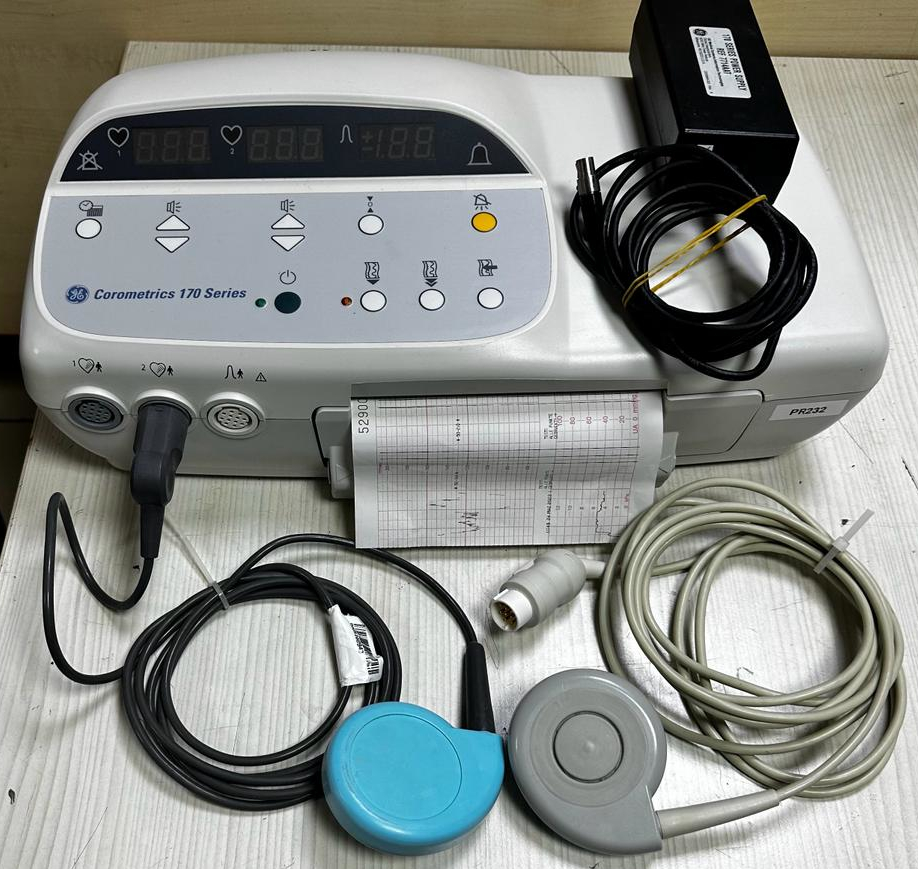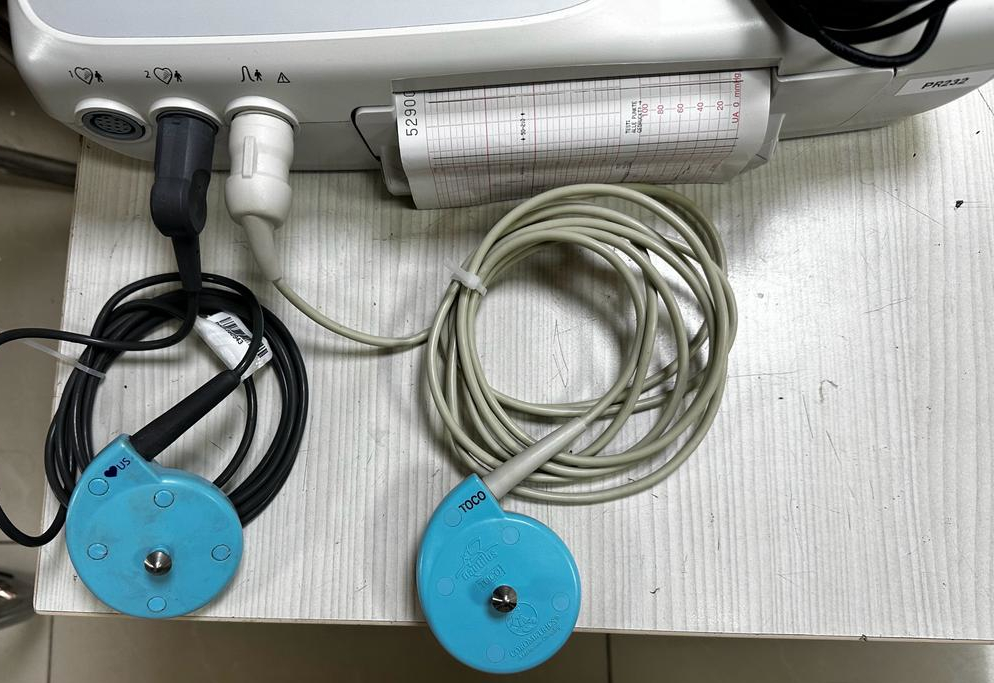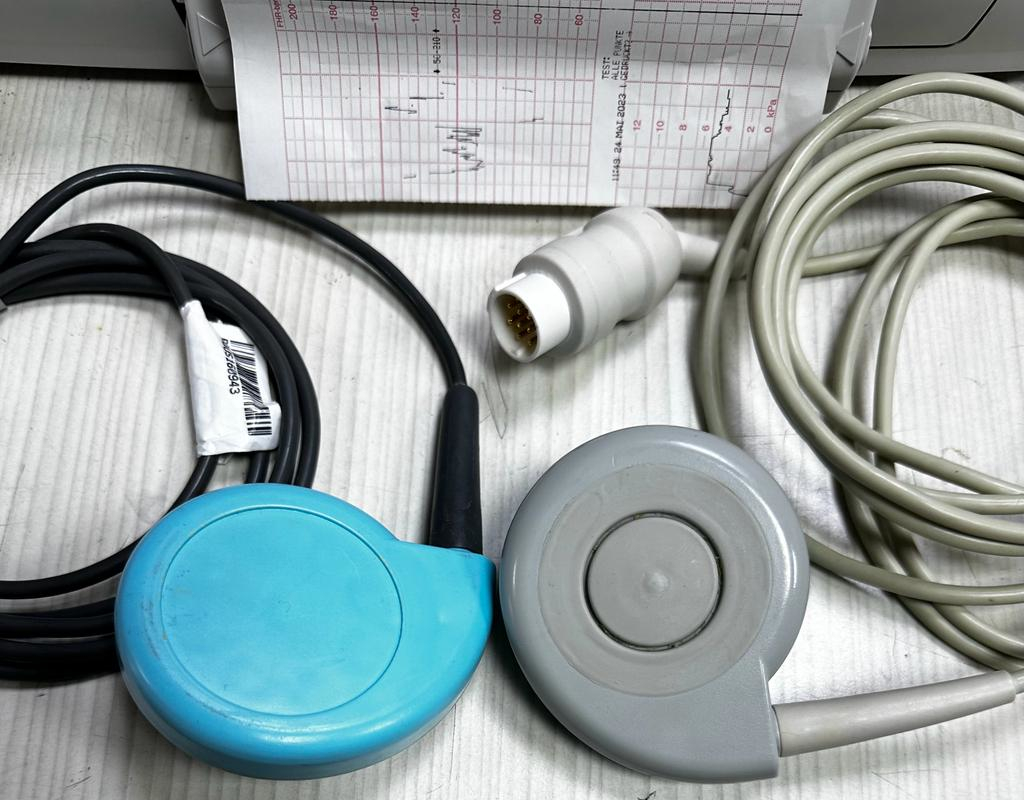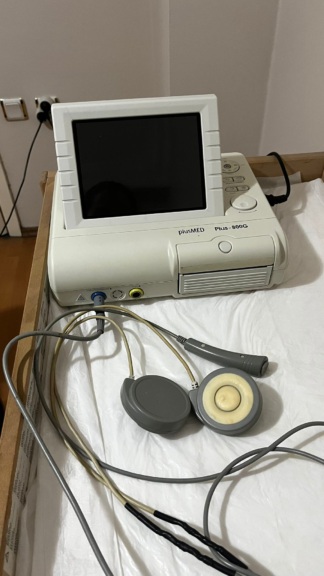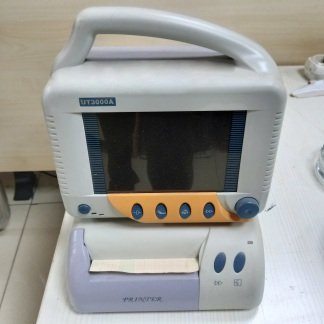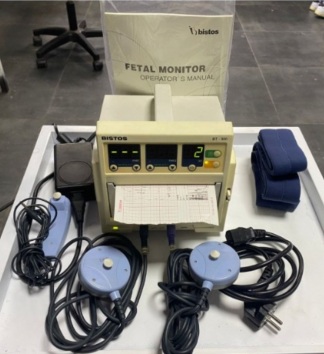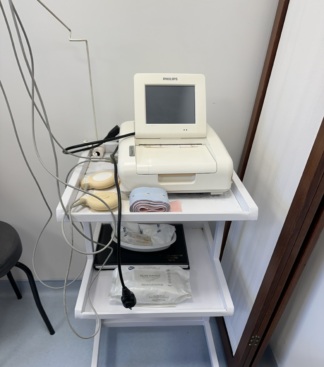Ready For Sale
Secondhand GE Corometrics 170 Fetal Monitor
Price: USD$ 1.500,00 Approx: 66.000,00 TL
Ready For Sale
Ask a Question
Payment
No additional fees, full assurance. We provide complete financial and operational security in secondhand medical device trading. For this, we offer the "Secure Payment" service. This free service protects the rights of both parties by securing the buyer's money and the seller's product. The Secure Payment system is a standard assurance mechanism offered by Medbidding. For additional information, review the "services" page.
There is no cash on delivery order system on the Medbidding platform. For payments to be made by credit card, the product to be purchased must comply with this payment method. You can contact us to get information about this. We would be happy to assist you.
For payments made outside of Turkiye, you can choose bank transfer, credit card, Western Union or cryptocurrency options. Installment options are not currently available for credit cards other than Turkish banks.
Shipping
Standard Shipping Conditions
In order to ensure secure transactions on Medbidding, the shipping process is managed through four different scenarios depending on the location of the buyer and seller. Free shipping is available for some categories. The terms below apply to all categories unless otherwise stated.
Buyer and Seller in Turkiye
- Seller → Medbidding: The seller packages the product and sends it to the Medbidding operations center. The seller is responsible for this shipping cost.
- Medbidding → Buyer: The product, inspected by Medbidding engineers, is sent to the buyer's address. The buyer is responsible for this shipping cost.
Buyer Outside of Turkiye, Seller in Turkiye
- Seller → Medbidding: The seller packages the product and sends it to the Medbidding operations center. The seller is responsible for this shipping cost.
- Medbidding → Buyer: The product, inspected by Medbidding engineers, is sent to the buyer's address. The buyer is responsible for this shipping cost.
Buyer in Turkiye, Seller Outside Turkiye
- Seller → Medbidding: The seller packages the product and sends it to the Medbidding operations center. The seller is responsible for this shipping cost.
- Medbidding → Buyer: The product, inspected by Medbidding engineers, is sent to the buyer's address. The buyer is responsible for this shipping cost.
Buyer and Seller Outside Turkiye
- Technical Inspection: Technical inspections are performed by our business partner in the seller's country (where available) or by our engineers via remote video call.
- Seller → Buyer: The seller packages the product and sends it to the buyer's address. The seller is responsible for this shipping cost.
Objective AI Report
Disclaimer: I am Medbidding AI. I am an unbiased AI robot. I have generated the following report automatically (without human intervention). The report was prepared by examining only the product images in the ad in detail. The report may contain errors. Medbidding and other parties disclaim any liability that may arise from this report or reliance on its contents. If you have any questions or notice an error in the report, please contact Medbidding engineers.
Report date: 02.08.2025
GE Corometrics 170 Series Fetal Monitor Analysis Report
Overview and Product Description
The device shown in the images is a fetal monitor (cardiotocography) device. The brand of the product is clearly visible as GE (General Electric), and the model is the Corometrics 170 Series. Based on the logo, fonts, and overall workmanship on the device, it is understood to be an original product. This device is used to monitor the fetal heart rate (FHR) and the mother’s uterine contractions (TOCO) during pregnancy and labor.
Package Contents and Quantity Information
The products and accessories shown in the images are listed below. In total, there is 1 main unit and 4 accessories.
- Main Device: 1 GE Corometrics 170 Series Fetal Monitor
- Power Adapter: 1 unit
- US Probe (Blue): 1 unit (for fetal heart rate)
- TOCO Probe (Gray): 1 unit (for uterine contractions)
- Unidentified Connector: 1 white, multi-pin connector
Physical State and Condition Assessment
The overall condition of the device has been assessed as used. There is significant yellowing on the white plastic casing of the main unit, likely due to age or exposure to sunlight. There are minor stains and marks on the surface of the device from general use. However, no cracks, fractures, or serious dents were observed on the casing.
The buttons and connection ports on the front panel of the device appear to be physically intact and undamaged. The paper emerging from the device’s thermal printer section suggests that the printer can mechanically advance the paper. The probes are also used, and scratches and signs of wear are noticeable, especially on the surface of the blue US probe. The gray TOCO probe has a relatively cleaner appearance. There are no visible breaks, crushes, or peeling on the outer insulation of the cables.
Accessories and Technical Details
The device comes with various accessories. The condition and features of these accessories are as follows:
- Power Adapter: A black power adapter is attached to the device. Although its label is not fully legible, it is understood to be a medical-grade adapter.
- Probes and Connectors: There are two round connector ports on the device for the probes. The blue probe (US) with a black cable is plugged into one, and the unidentified connector with a white cable is plugged into the other. The TOCO probe with a gray cable is unplugged. No expiration date information was found on the cables.
- Printer Output: A measurement graph and the heading “TEST” are visible on the paper from the device’s printer. There is a handwritten date “24 Mar 2023” on the paper. This date may indicate the last use or calibration date of the device.
Label Information and Codes
The codes and numbers identified on the device and its accessories are listed below:
- Asset Tag: There is a label with PR232 on the front right side of the device.
- Paper Roll Code: A number starting with 5290… is partially visible on the edge of the paper from the printer. This could be the lot or serial number of the paper roll.
- Probe Cable Label: There is a barcoded label with DRG-089543 on the black cable of the blue probe.
No other clear label information regarding the device’s serial number, REF code, or year of manufacture could be identified in the images.
Current and Potential Status Analysis
There is no evidence in the images to confirm if the device is operational, as its screens are off. Therefore, no comment can be made on the functionality of the electronic components. There are no visible signs of fracture or malfunction on the device.
As a potential risk, the yellowing of the device’s casing indicates that the plastic has aged and may have become more brittle. The date, which suggests the device might have been last used over a year ago, implies it may have been in storage for a long time and might require maintenance or inspection before operation. The functional status of the power adapter and probes is uncertain. Overall, while the physical condition of the device appears reasonable for its age, it is not possible to assess the condition of its electronic components.

